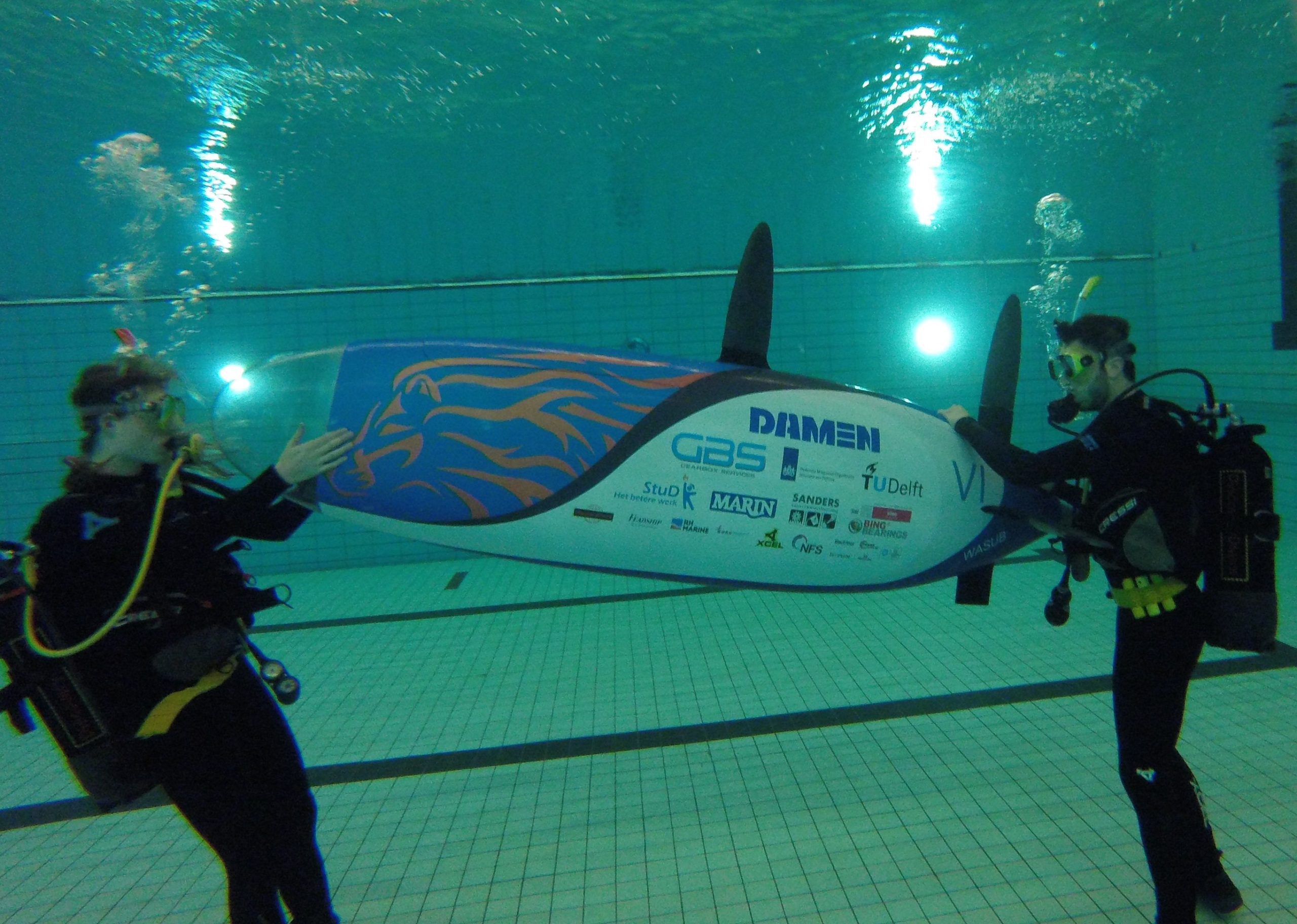Imagine riding a bicycle underwater while wearing a wetsuit. This can be downright exhausting but it’s essentially what drivers for the WASUB team do every time they jump behind the controls of one of their human-powered submarines.
The WASUB team was founded in 2004 and they’re currently preparing for their next intense competition. This July, they’re heading to QinetiQ’s Ocean Basin testing facility in Gosport, England for the 2016 European International Submarine Race (eISR). Unlike more conventional competitions, this one places a heavier emphasis on manoeuvrability than acceleration. This presents a unique challenge for an organisation that broke a speed record last year. “Last year our team broke the speed record for a human powered submarine. It was 7.42 knots,” team leader Sander Leussink said. “That’s almost 14 kilometres an hour but now we’re entering an entirely different sort of race. The course is longer and it’s a parkour with a u-turn and a slalom. It’s more about being manoeuvrable than just speed.”
As a result, the WASUB VI, the team’s latest submarine, is somewhat slower than their prior edition. However, it features an improved electrical guidance system and a lighter hull, which was constructed out of carbon fibres. This enabled the team to more evenly disperse the vehicle’s weight, a factor that could give them an edge over their competition this summer.
The Dream Hall-based team has also been collaborating with human movement scientists at VU Amsterdam that have helped them select and train their three drivers. Along with being strong enough to power the sub using a system similar to a bicycle’s gears, each one must maintain a great deal of focus during competitions. They have to keep an eye on the sub’s monitors, which track its depth and potential for rolling. The drivers also have no way to communicate with their team members aside from a ‘dead man’s switch’ to alert them and safety crews in case of an emergency. A single mistake could cause their head to breach the surface of the water, or cause the sub to bump the bottom of the pool, thus costing the WASUB team vital points.
“It’s a very unnatural habitat, being in an enclosed compartment under water and performing at the top of your abilities,” Leussink said. “They use a lot of energy during the race. It’s very physically demanding.”
The team is currently testing the WASUB VI at an indoor facility in Eindhoven but they’ve also used it in waters closer to campus. “Recently, since the weather was so nice, we went to an outdoor pool and there were a few people on the other side just swimming around,” Leussink said. “They were quite surprised since it’s not an everyday sight. We just had to make sure they didn’t hit the sub when they dived into the pool.”
In addition to preparing for the eISR this summer, Leussink and his crew have faced another challenge: explaining to their curious friends and colleagues how to properly say ‘WASUB’. “It’s actually pronounced by lots of different people in lots of different ways,” he said. “It’s like a combination of ‘what’s up? and ‘submarine.'”



Comments are closed.